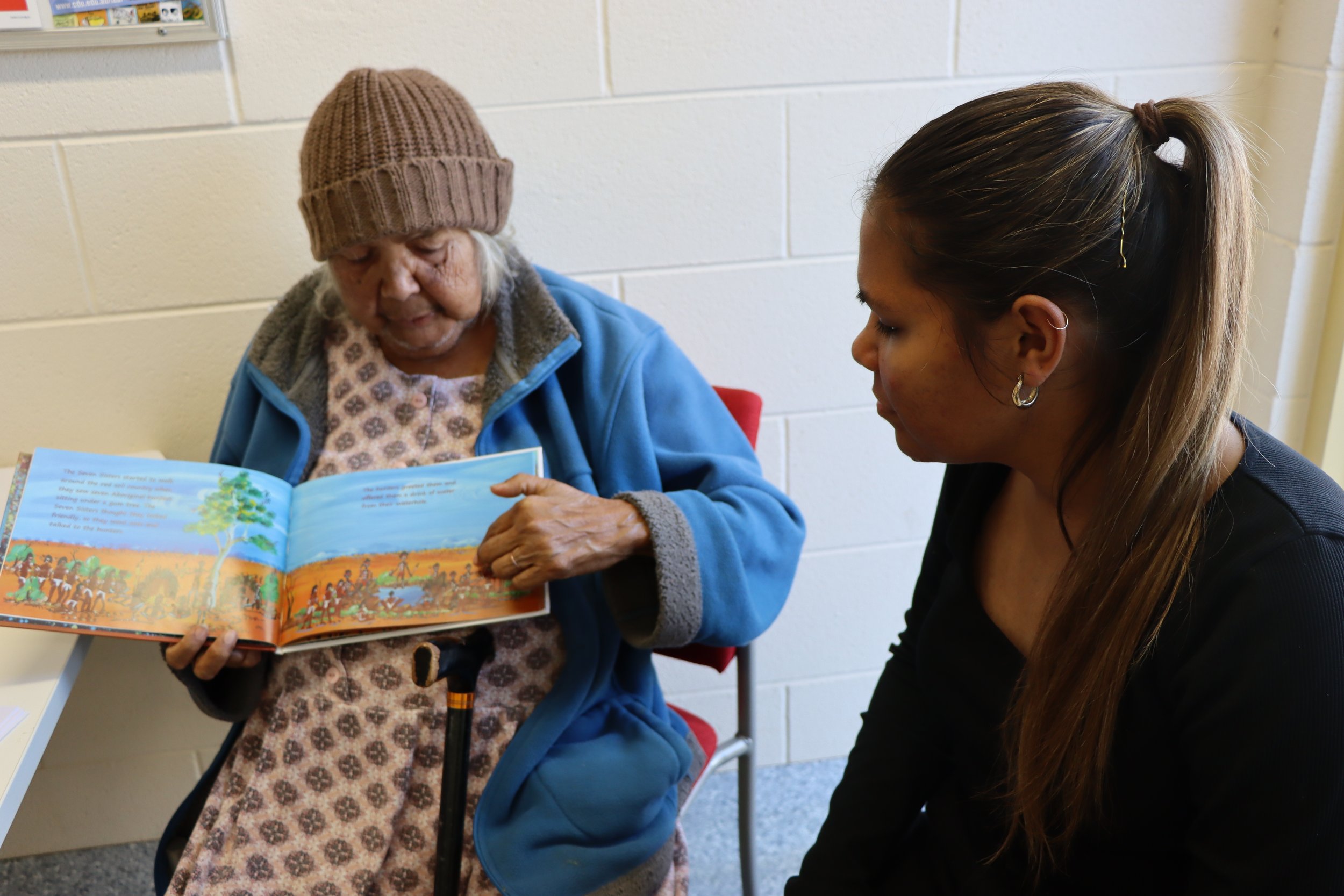
Master Apprentice Program
The Master-Apprentice Program (MAP)
The Master-Apprentice Program (MAP) is a world leading method of Indigenous language revival that was developed by Indigenous communities in California and has since been taken up by First Nations peoples globally. The methodology is outlined in Hinton, L. (2002) How to keep language alive: a commonsense approach to one-on-one language learning. The MAP model grows new fluent speakers through intensive oral immersion sessions with Elder speakers (the master) and adult learners (apprentices). Elders and apprentices are to spend 10-20 hours together each week, talking nothing but their Indigenous language to recreate natural intergenerational transmission babies would receive when acquiring their first language. We are returning to our old, pre-invasion pedagogies of listening, talking and gaining understanding as learners from our Elders, to transmit the full-life of our languages. MAPs teach not through explicit instruction but through immersion and experience.
Our Elders are our most precious resource. We see our language as a gift from our ancestors, and accept our responsibility to continue their legacy to bring Pertame into the future.
Master-apprentice programs are recognised internationally and within Australia as the best practise method for saving endangered Indigenous languages with few remaining fluent speakers. The AIATSIS National Indigenous Language report recommended MAPs as showing “notable success” internationally . Additionally, the 2012 Our Land Our Languages gave high-level recognition to the value of the MAPs and recommended its widespread application around Australia. Despite this, the Pertame MAP is currently the only active MAP in Australia.

International Connections
The Pertame School embarked on the Master-Apprentice program in 2020 after two Pertame representatives were invited to New York by the Global Indigenous Language Caucus to receive training in the Master-Apprentice process. Through this training they developed international networks with the Yuchi Language Project in Oklahoma, the Advocates of Indigenous Californian Language Survival, the Sauk Language Program and the Kumeyaay Community College in San Diego.
In January 2022, two Pertame apprentices travelled to the Cherokee Nation to present at the UN International Decade of Indigenous Languages Launch Event.
In our program, we teach Pertame in Pertame. We do not translate into English. We Teach Through:
-
Role Plays & Games
Elder speakers guide apprentices through role-plays and games in language to teach concepts without English translations. Apprentices role play child-rearing language with baby dolls, bathing, dressing, feeding and even changing their nappies in language.

-
Pictures, Photos and Stories
Apprentices can use photos, pictures, cartoons and story books to ask questions and learn more language with Elders without English translations. Apprentices make specific cartoons too learn certain new concepts from Elders.

-
Everyday Activities and Conversations
Apprentices and Elders learn through talking, gossiping, joking, and doing activities together. Learning language becomes a social experience with family and community, rather than theoretical study of words on a page. Apprentices and Elders cook together, eat together, go on walks and clean together, all in language.

Master-Apprentice Conference
In August 2022, the Pertame School hosted the first Master-Apprentice Conference in Australia. We invited 7 of the foremost First Nations experts of immersion Language Revival to Alice Springs to host 3 days of training, networking, knowledge and cultural exchange. We partnered with 6 organisations including Batchelor Institute, the Global Indigenous Language Caucus, Yuchi Language Project, Advocates for Indigenous California Language Survival and the Next Steps Language Revival Project.








